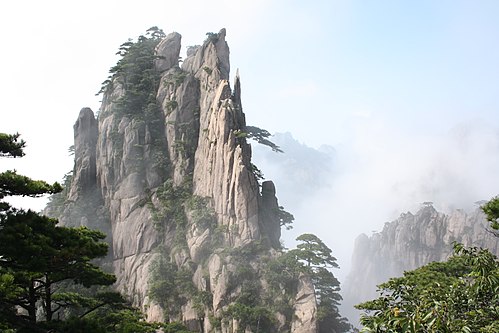Gneissnoun
(geology) A common and widely-distributed metamorphic rock having bands or veins, but not schistose.
Gneissnoun
A crystalline rock, consisting, like granite, of quartz, feldspar, and mica, but having these materials, especially the mica, arranged in planes, so that it breaks rather easily into coarse slabs or flags. Hornblende sometimes takes the place of the mica, and it is then called hornblendic gneiss or syenitic gneiss. Similar varieties of related rocks are also called gneiss.
Gneissnoun
a laminated metamorphic rock similar to granite
Gneiss
Gneiss ( nyse) is a common and widely distributed type of metamorphic rock. Gneiss is formed by high-temperature and high-pressure metamorphic processes acting on formations composed of igneous or sedimentary rocks.
Granitenoun
(rock) A group of igneous and plutonic rocks composed primarily of feldspar and quartz. Usually contains one or more dark minerals, which may be mica, pyroxene, or amphibole. Granite is quarried for building stone, road gravel, decorative stone, and tombstones. Common colors are gray, white, pink, and yellow-brown.
Granitenoun
Toughness; the quality of having a thick skin or being rough.
Granitenoun
A crystalline, granular rock, consisting of quartz, feldspar, and mica, and usually of a whitish, grayish, or flesh-red color. It differs from gneiss in not having the mica in planes, and therefore in being destitute of a schistose structure.
Granitenoun
plutonic igneous rock having visibly crystalline texture; generally composed of feldspar and mica and quartz
Granitenoun
something having the quality of granite (unyielding firmness);
Granite
Granite () is a coarse-grained igneous rock composed mostly of quartz, alkali feldspar, and plagioclase. It forms from magma with a high content of silica and alkali metal oxides that slowly cools and solidifies underground.





























